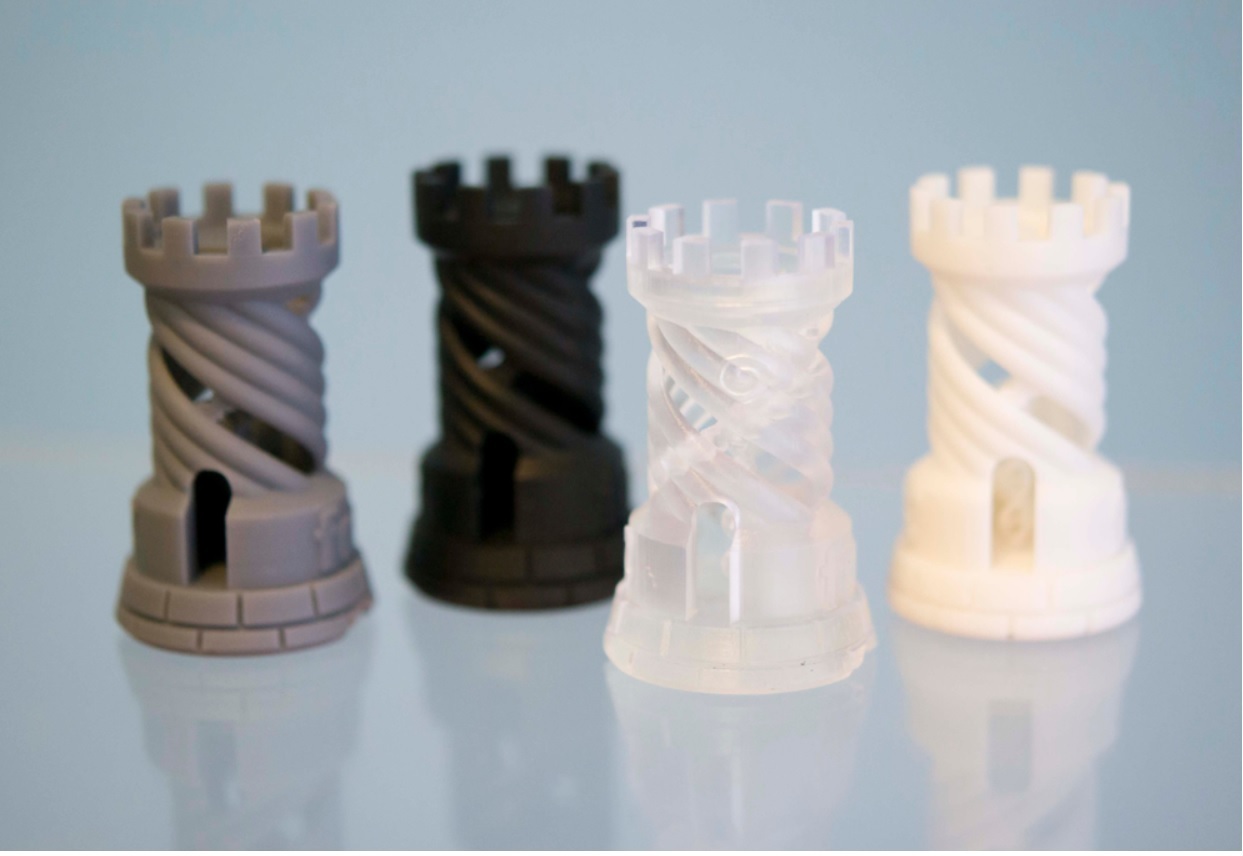Smooth 3D Prints: the best technologies
Because of the layer by layer printing involved in FDM printing and the diameter of the nozzle, FDM doesn’t always produce a very smooth surface finish. However, modern industrial FDM machines are capable of much finer surfaces. SLS, MJF, and DMLS produce a grainy surface as a result of the powdery nature of the raw materials used in these technologies. Regardless of 3D printing technology, a smooth surface can always be achieved in printed parts, using post-processing operations.
There are several 3D printing technologies capable of producing smooth as-printed parts. Those are explored below.
SLA 3D printing
Stereolithography 3D printing produces parts with the highest accuracy and smoothest surface finish among all 3D printing technologies. Although it is a layer-by-layer process, the raw material is usually in resin form and solidifies to give a smooth surface.
Polyjet 3D printing
Like SLA, Polyjet prints photopolymers. Most Polyjet parts are ready to use as-printed in terms of look and feel. The main reason for this smoothness is the combination of ultra-thin layer printing and high-quality resin.
Carbon DLS
Carbon DLS uses resin materials like polyurethane. The surface finish of the 3D part produced with this method is as smooth as glass. This process produces impeccable parts that can replace prototypes from MJF or SLS. In addition to a high-quality surface finish, Carbon DLS produces external and internal details perfectly.
Smooth 3D Prints: the best materials
Material consideration for smoothness typically goes together with printing process consideration, as, in most cases, the process is a far more significant factor. Thermoplastics, thermosetting resins, photopolymers, and polyurethane are typically 3D printing materials with a smooth surface finish.
But it is important to consider not only smoothness but also strength, heat resistance and accuracy for making the best choice.
Smooth 3D Prints: post-processing operations
Post-processing is the most effective way of guaranteeing a smooth surface finish in 3D printing. In most cases, post-processing can be used to achieve this result, even if the technology or the material are not so performative.
It is important to consider the geometry and the material of our 3D print for choosing the right post-processing method, because it will deliver different textures and appearances.
Bead Blasting
The bead blasting technique involves spraying a pressurized stream of tiny beads of media (plastic or glass) from a nozzle onto the surface of the part. This removes the layer lines leaving a smooth finish. In addition, the end product resembles a uniform matte finish. One of the advantages of bead blasting over sanding is speed. The process takes about 5 to 10 min for a part. However, the duration will depend on the part size. Another advantage of bead blasting is the preservation of the part’s dimensions.
• Time-consuming
• Polishing can produce a shiny surface
• Not suited for parts with high tolerances
• Not suited for parts with intricate geometries
Are you interested in testing the most effective method to achieve a smooth surface for your 3D prints? Feel free to upload your Cults3D file on Xometry’s Instant Quoting Engine, select the technology, the material and the finishes you’re looking for and receive an immediate quotation.


Recent Comments